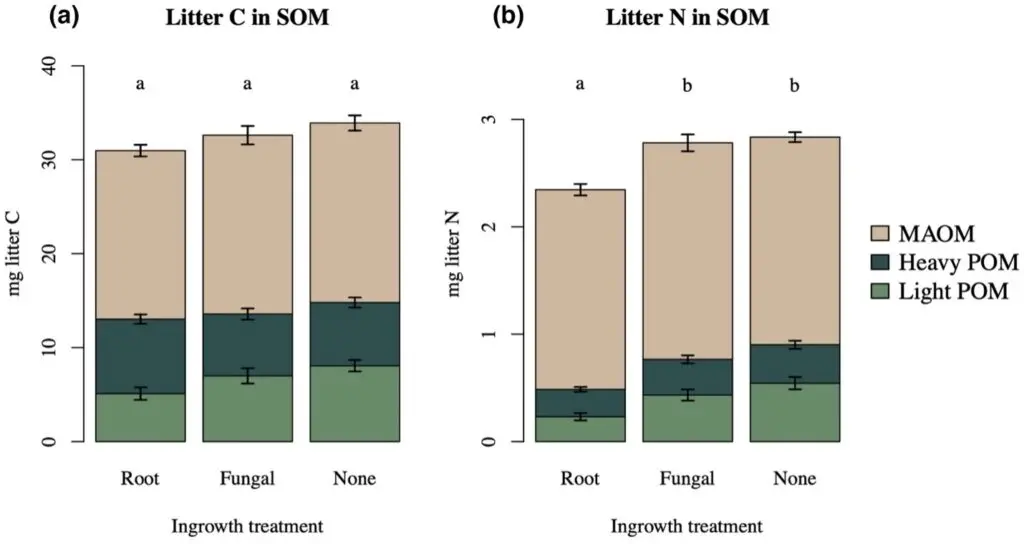Roots Selectively Decompose Litter to Mine Nitrogen and Build New Soil Carbon
Themes: Sustainability
Keywords: Biomass Analytics, Field Data
Citation
Ridgeway, J., Kane, J., Morrissey, E., Starcher, H., Brzostek, E. Oct. 28, 2023. Data from: “Roots Selectively Decompose Litter to Acquire Nitrogen and Build New Soil Carbon.” Zenodo Repository. DOI: 10.5281/zenodo.8408435.
Overview

Plant-microbe interactions in the rhizosphere shape carbon and nitrogen cycling in soil organic matter (SOM). However, there is conflicting evidence on whether these interactions lead to a net loss or increase of SOM. In part, this conflict is driven by uncertainty in how living roots and microbes alter SOM formation or loss in the field. To address these uncertainties, we traced the fate of isotopically labelled litter into SOM using root and fungal ingrowth cores incubated in a Miscanthus x giganteus field. Roots stimulated litter decomposition, but balanced this loss by transferring carbon into aggregate associated SOM. Further, roots selectively mobilized nitrogen from litter without additional carbon release. Overall, our findings suggest that roots mine litter nitrogen and protect soil carbon.